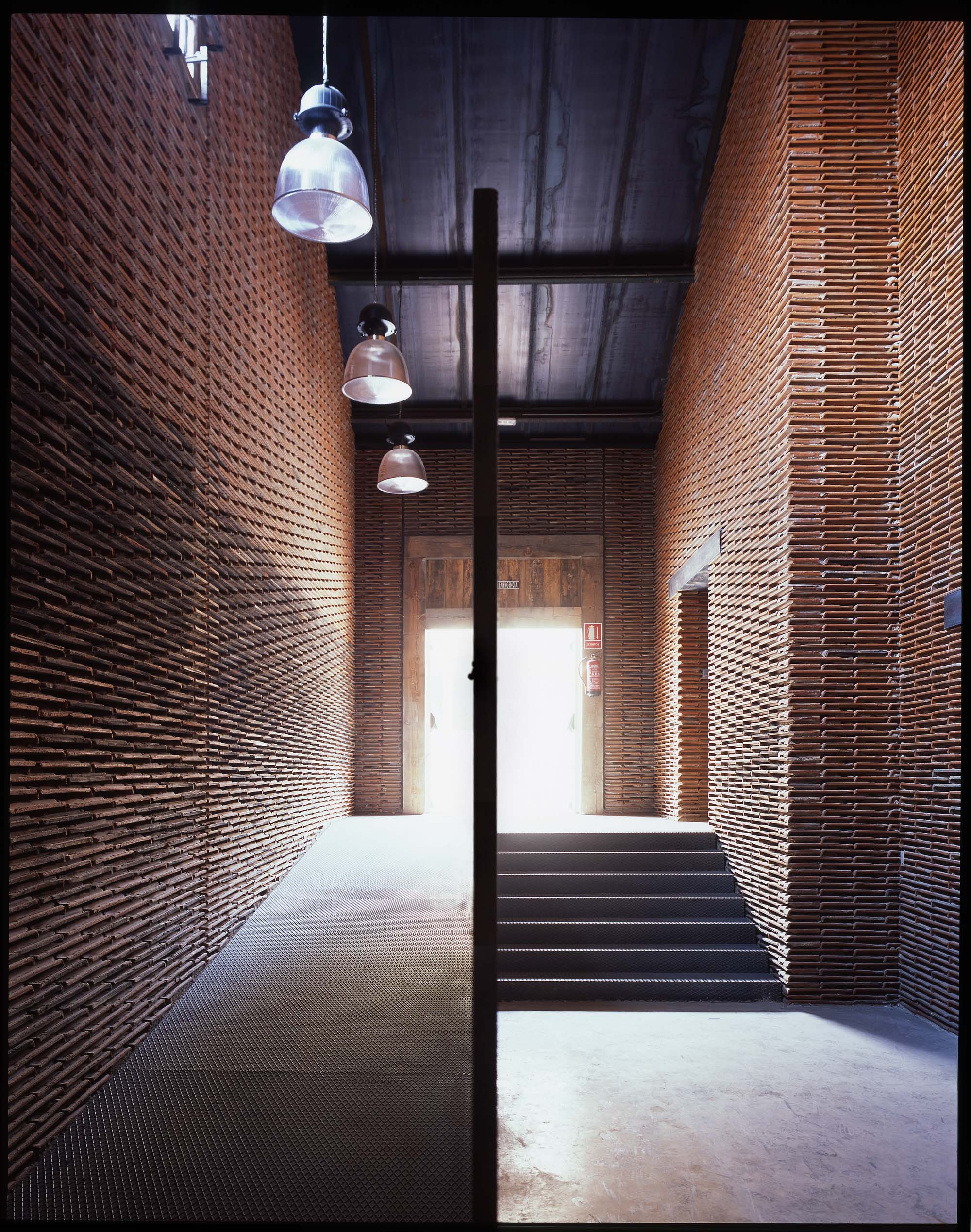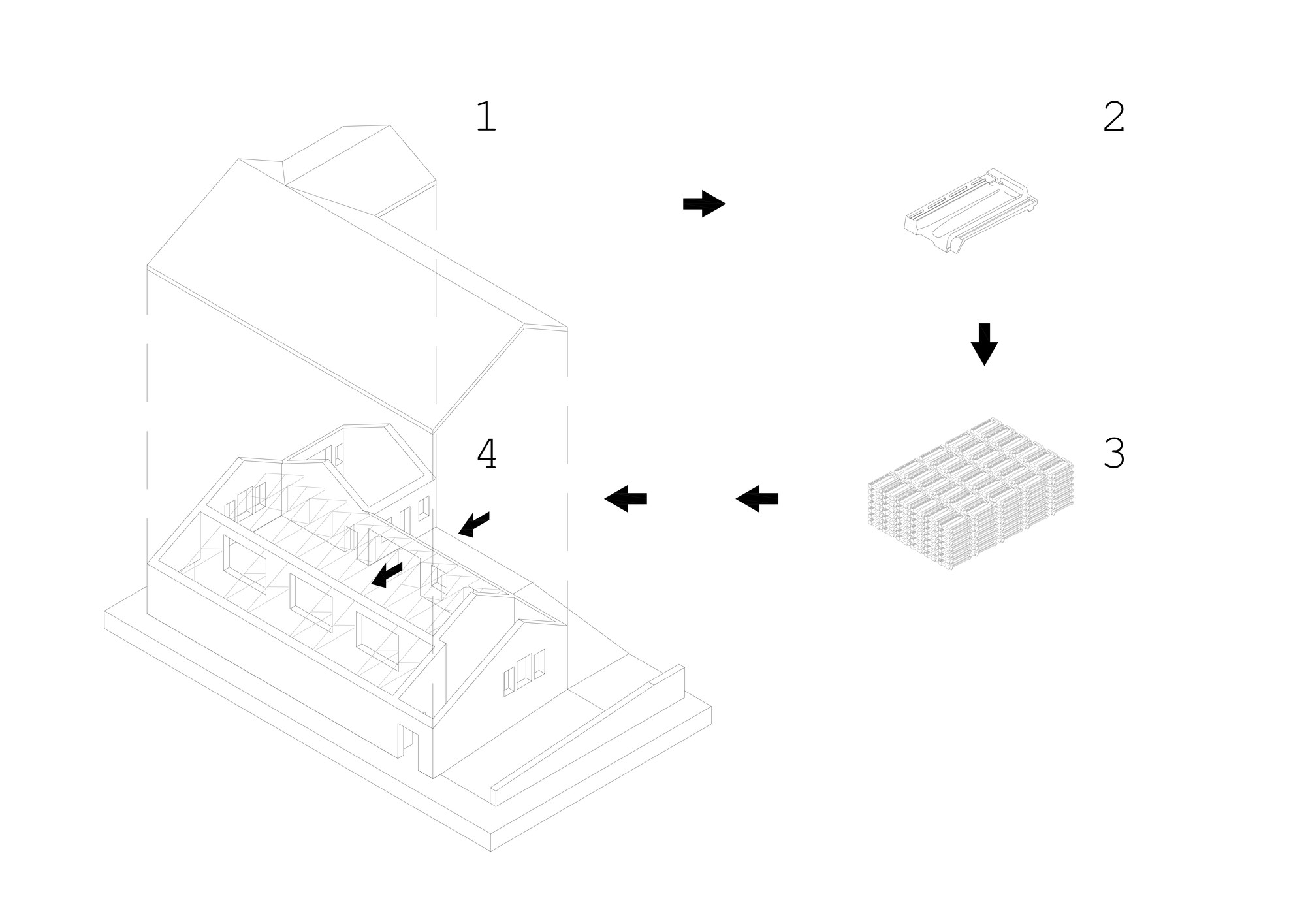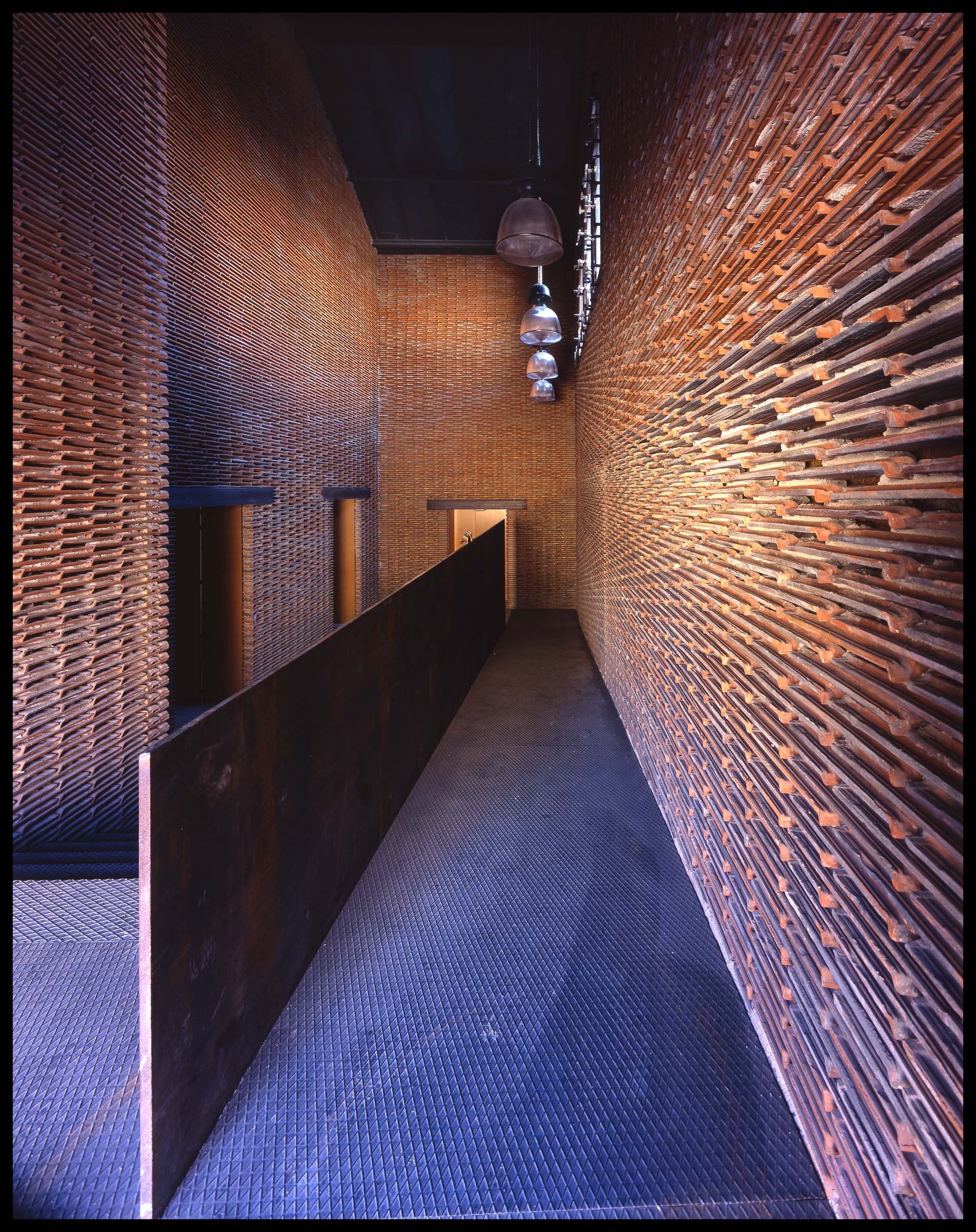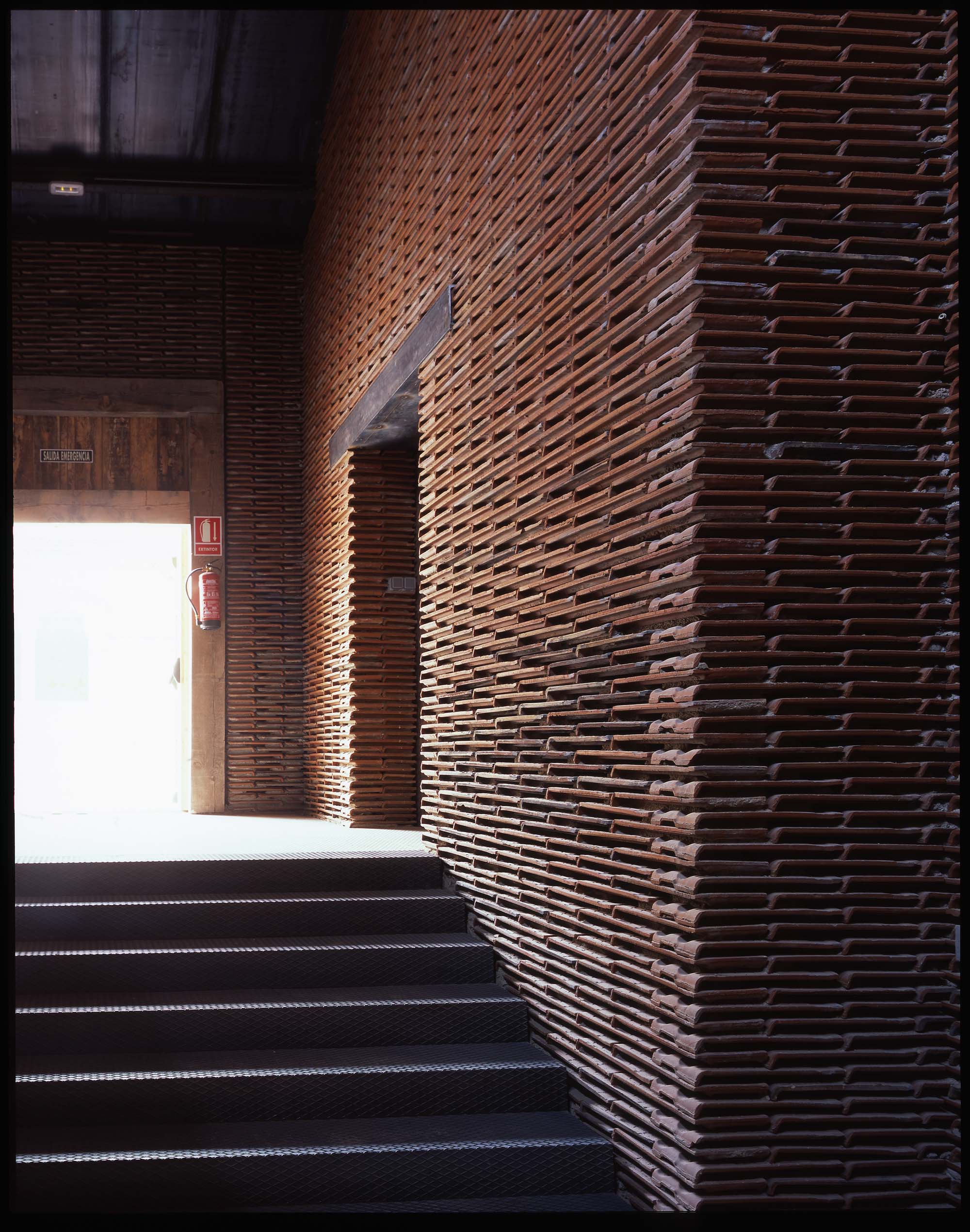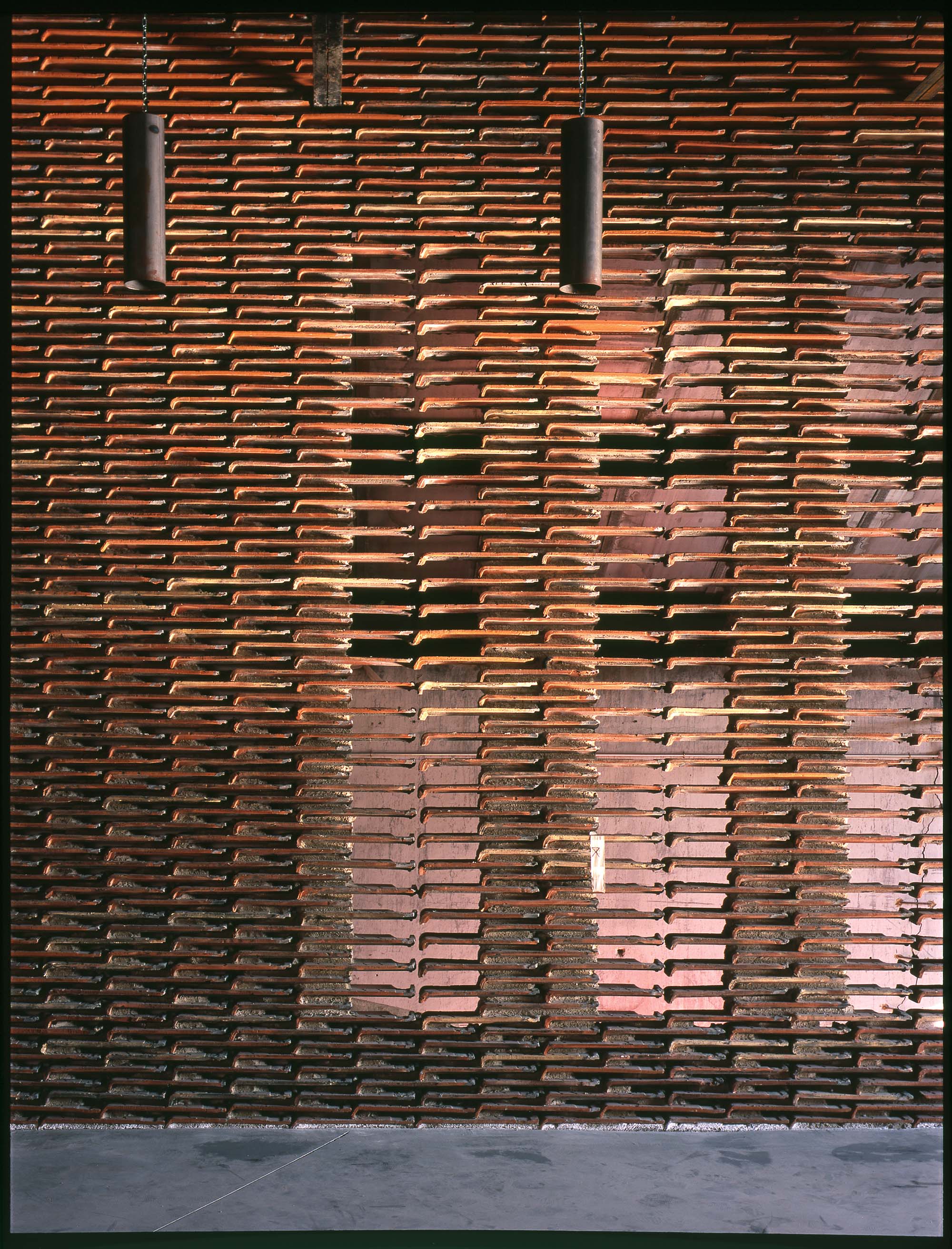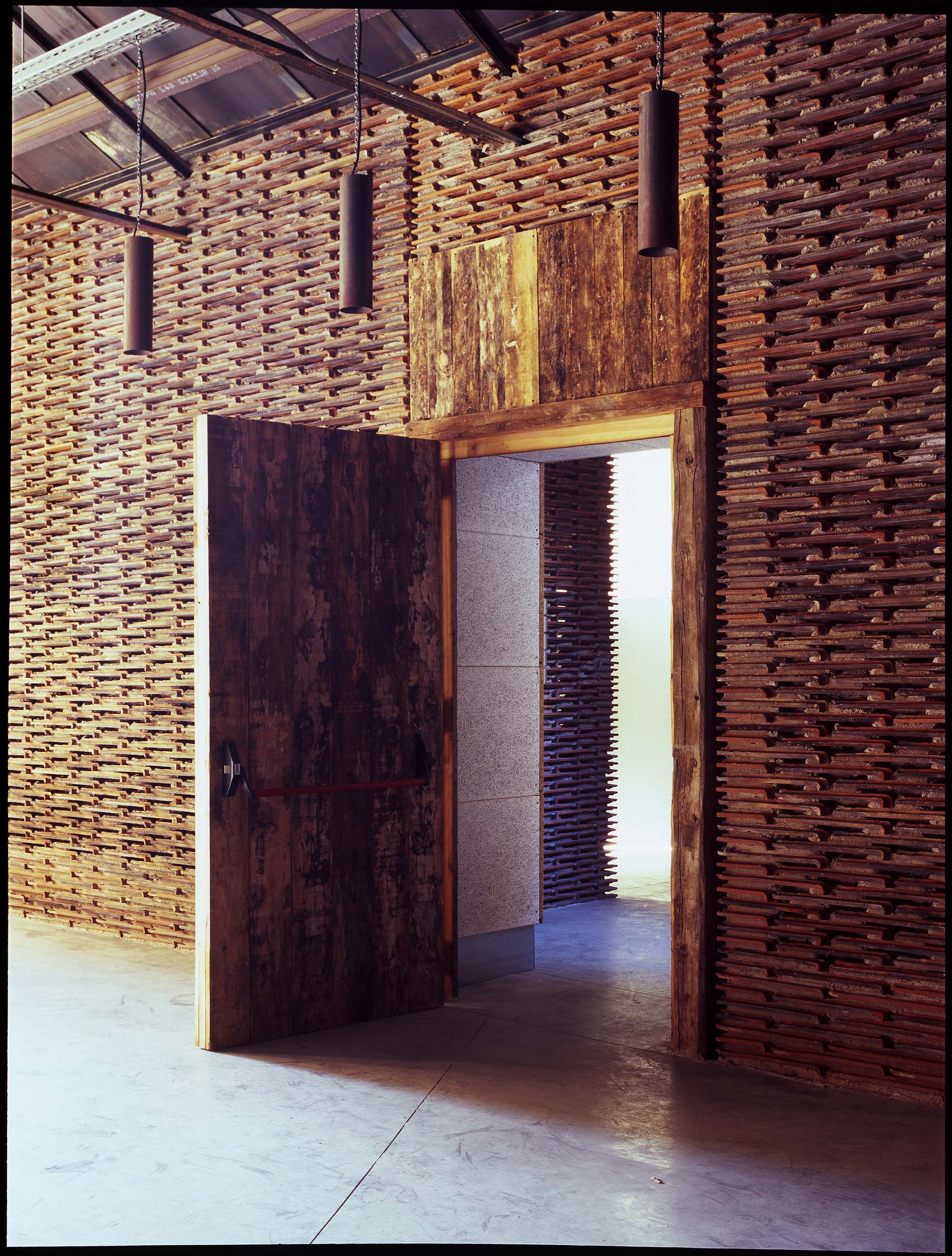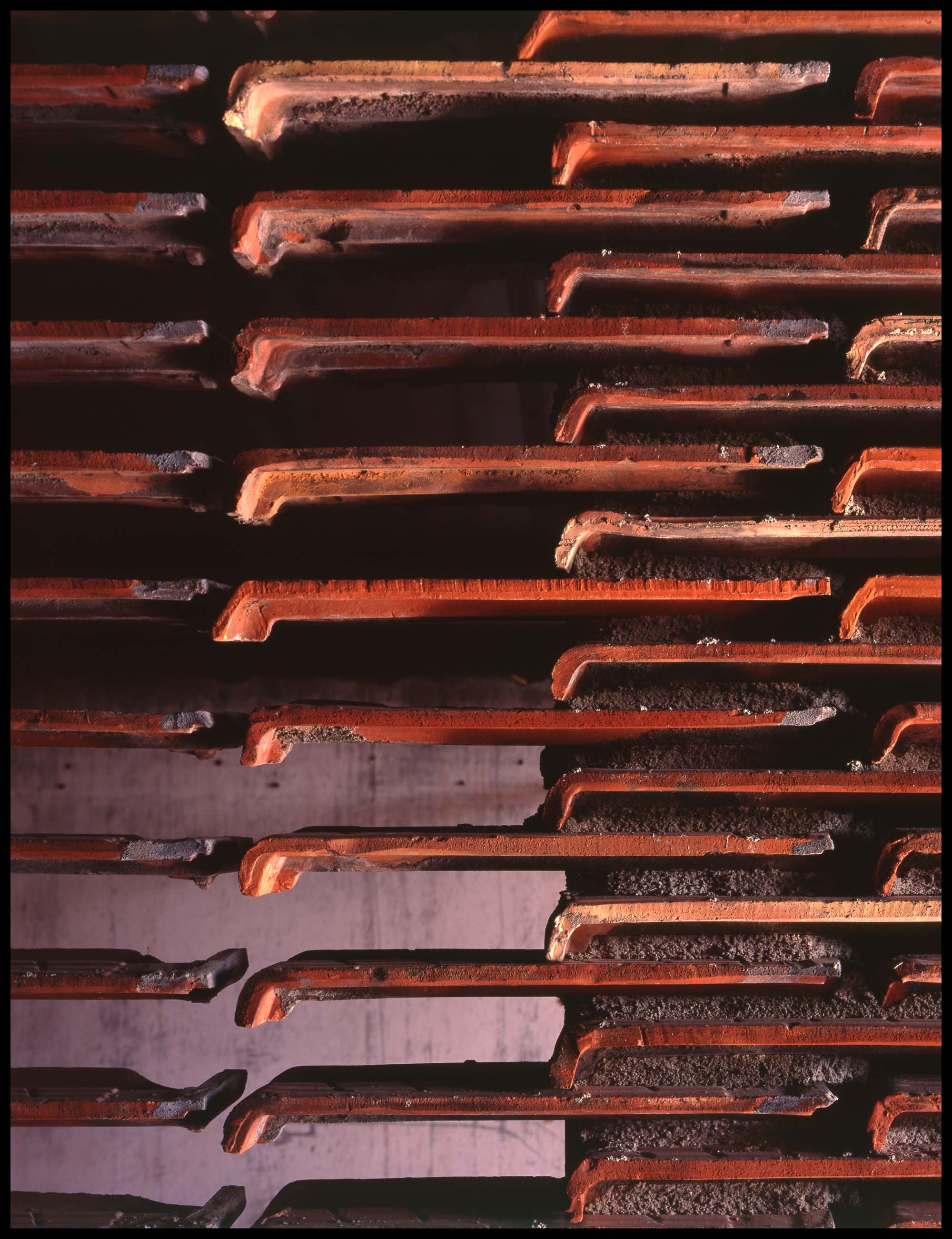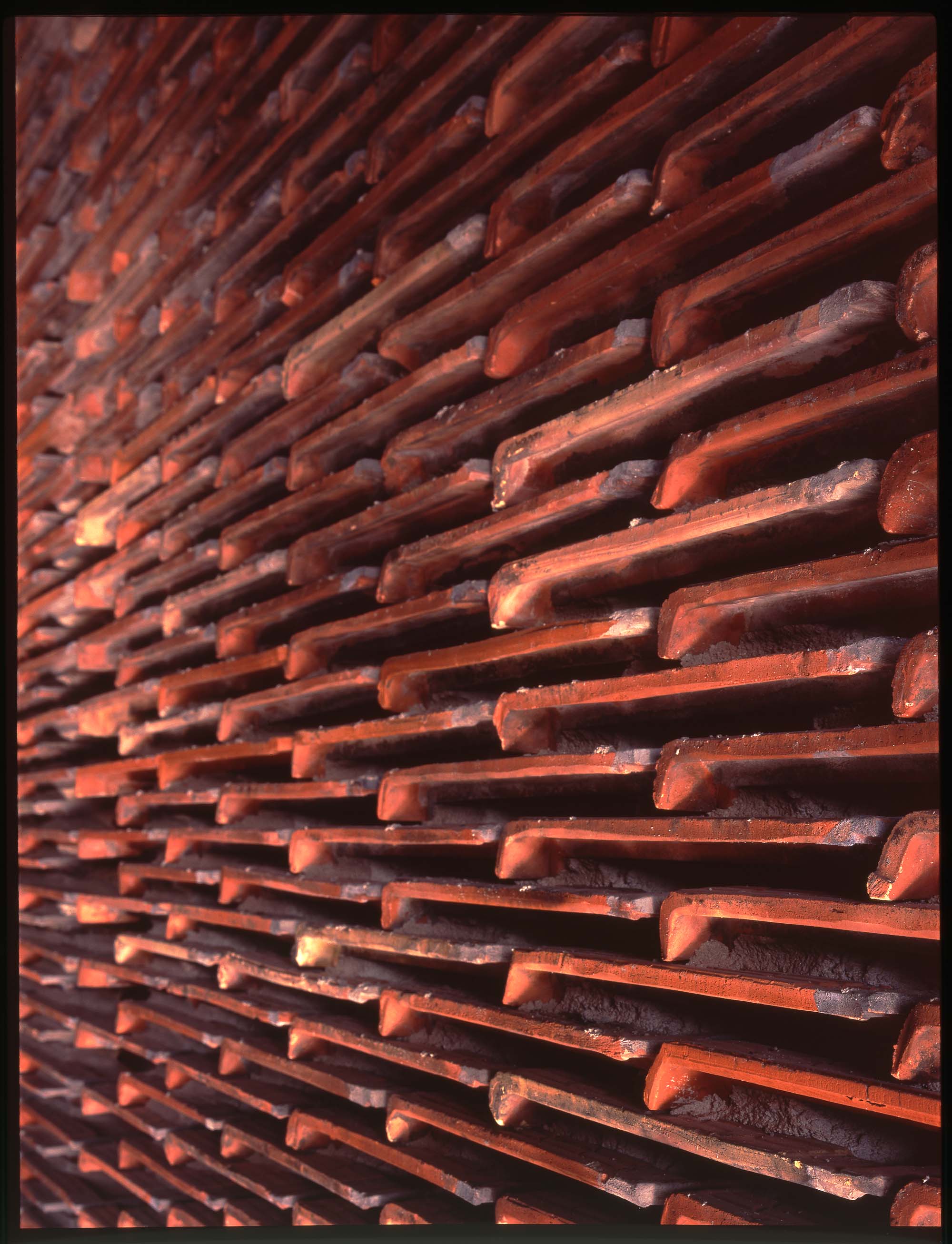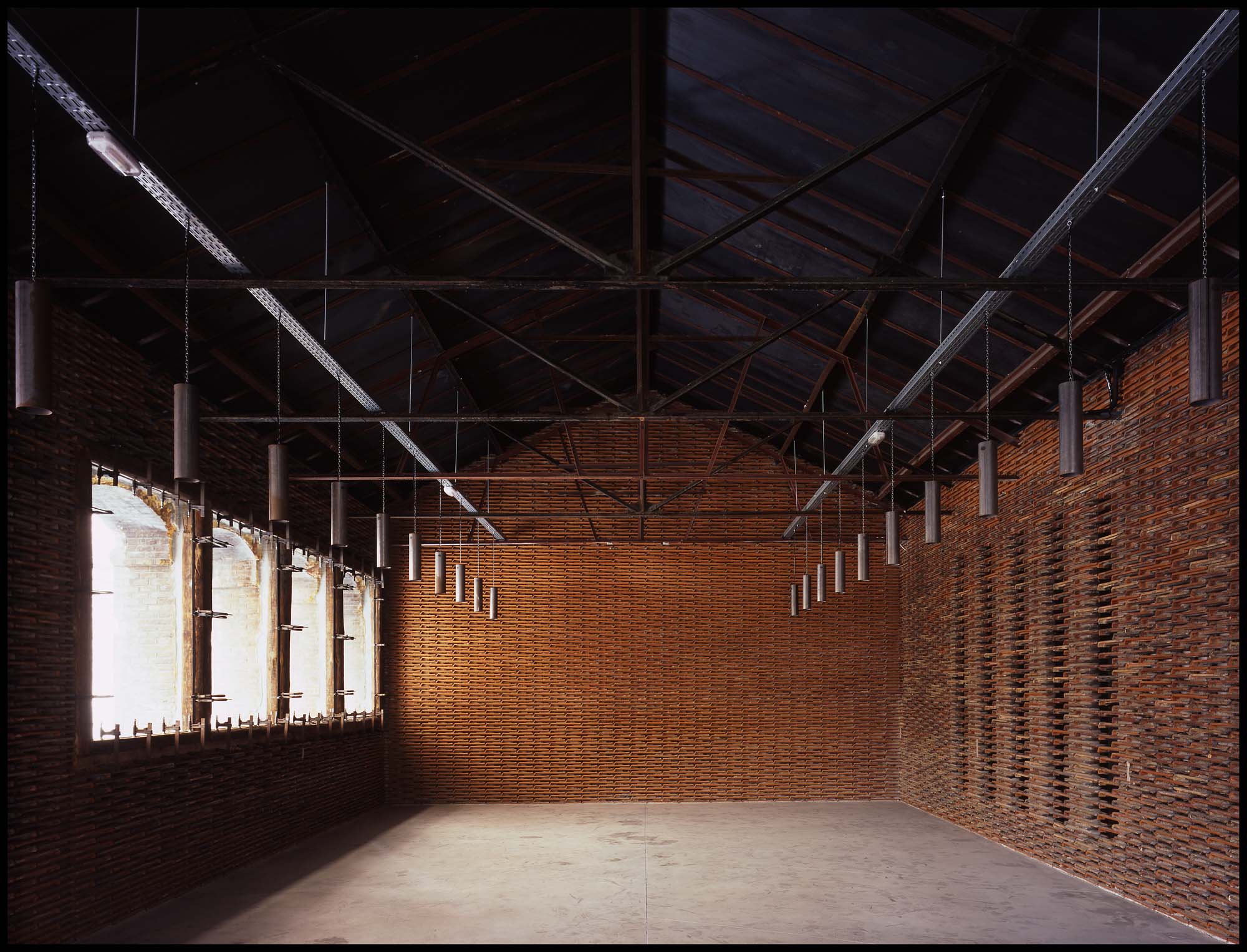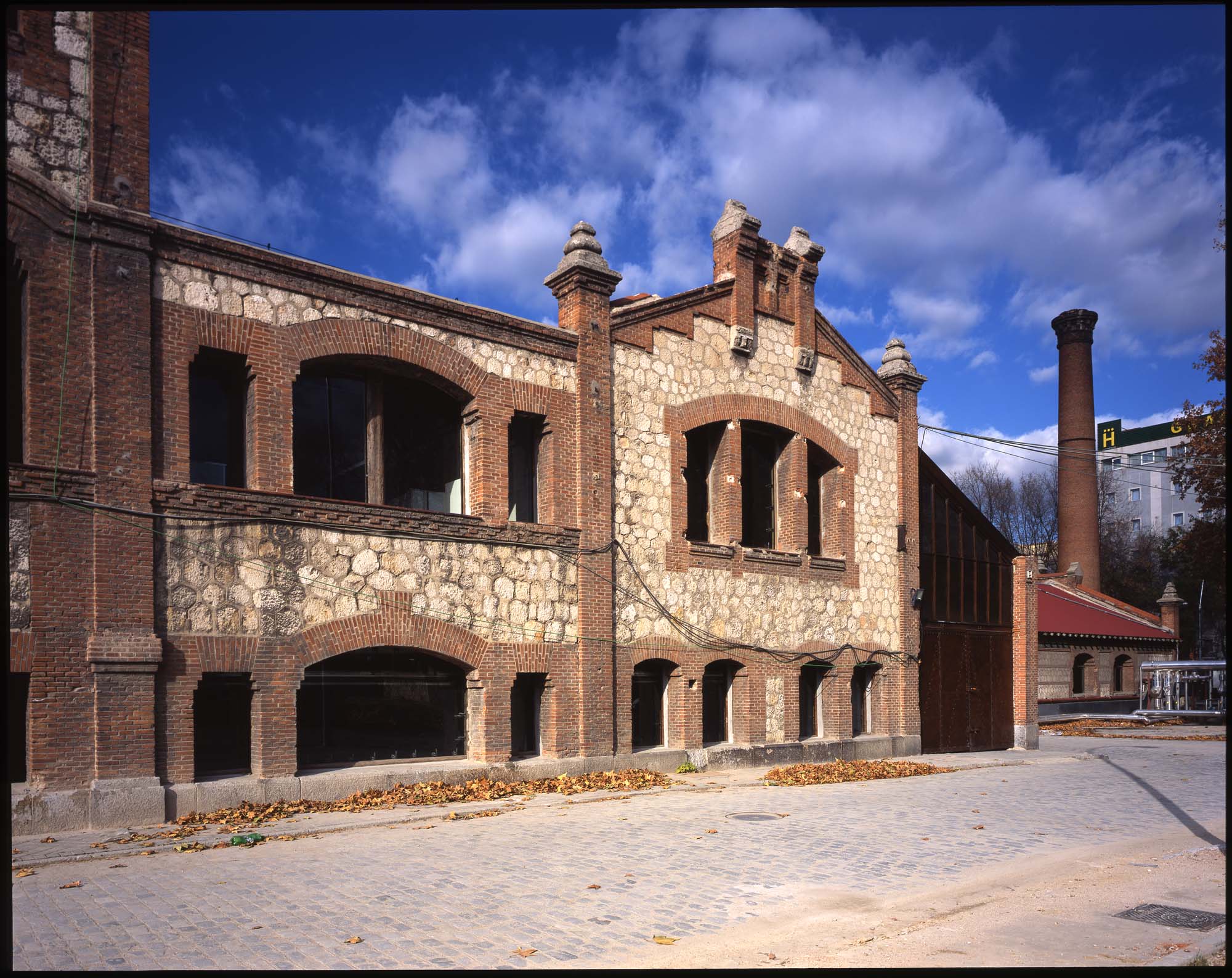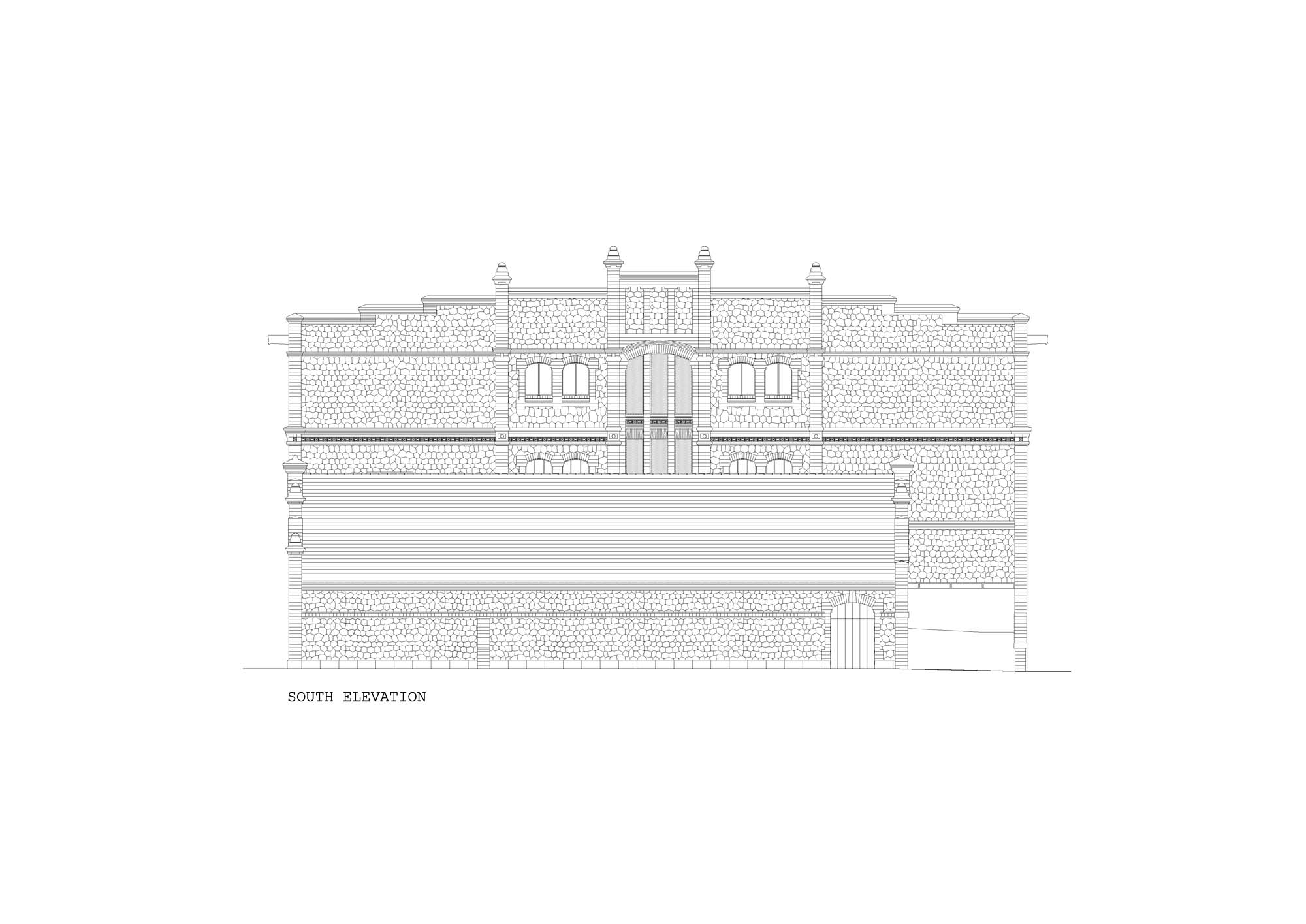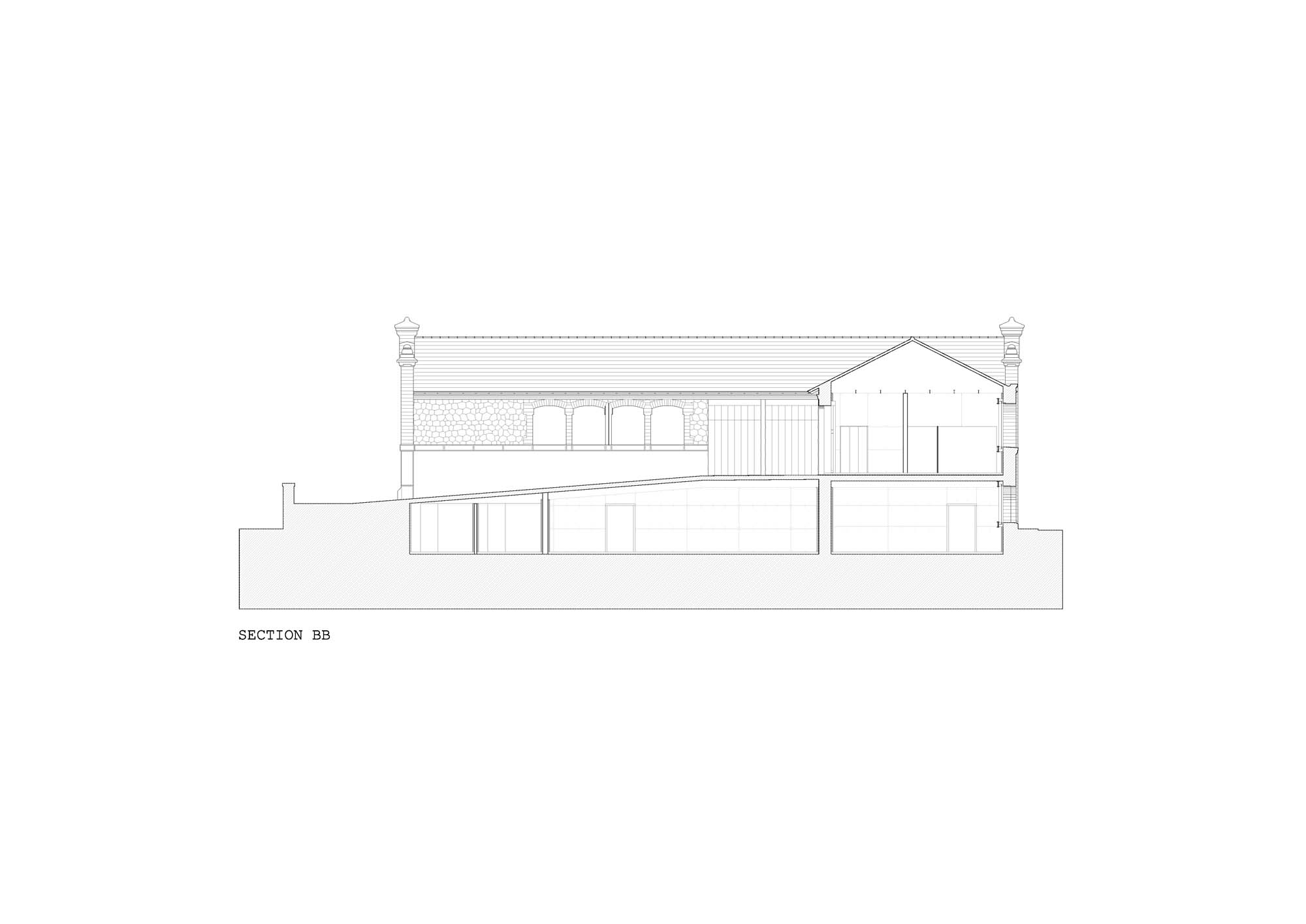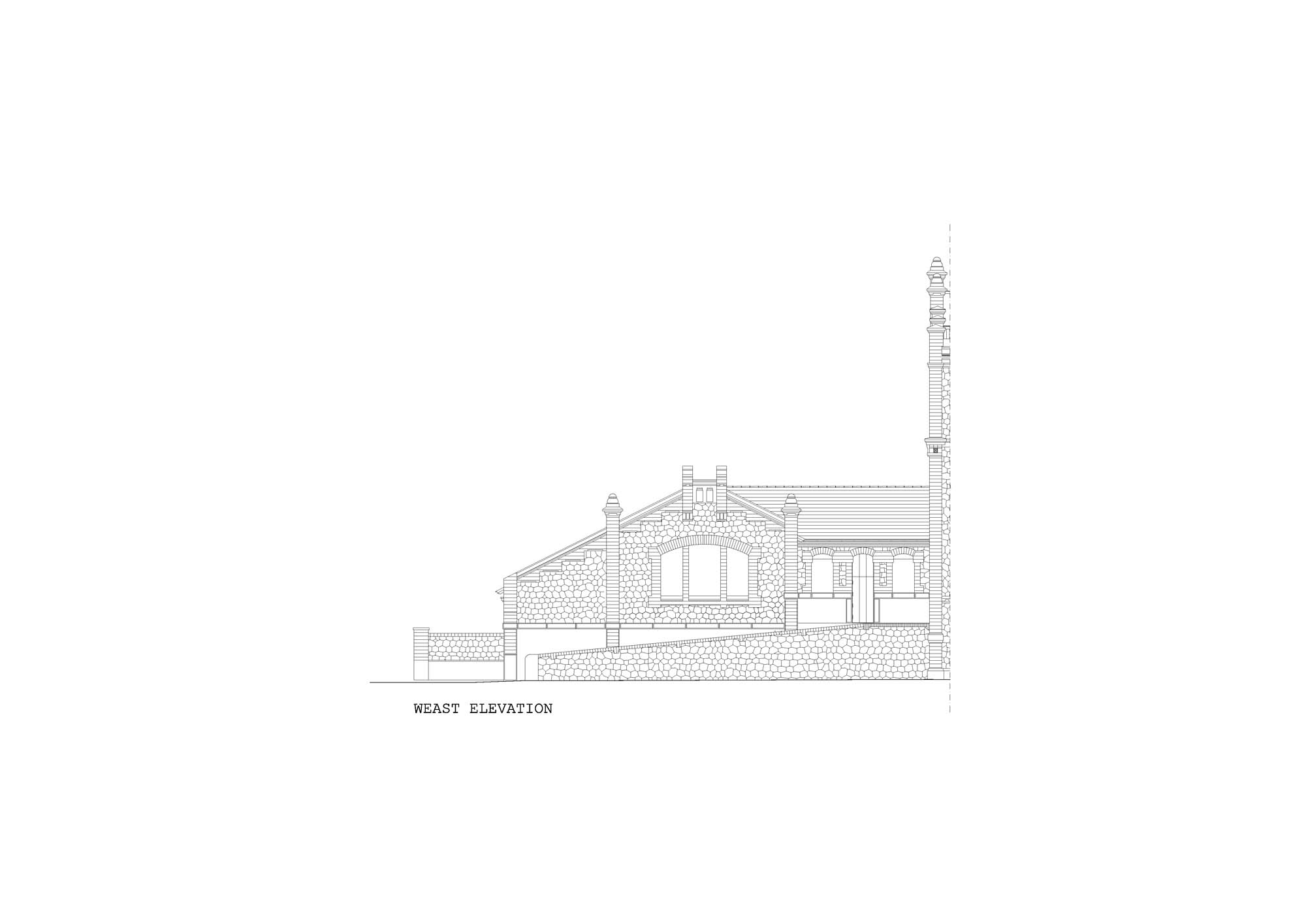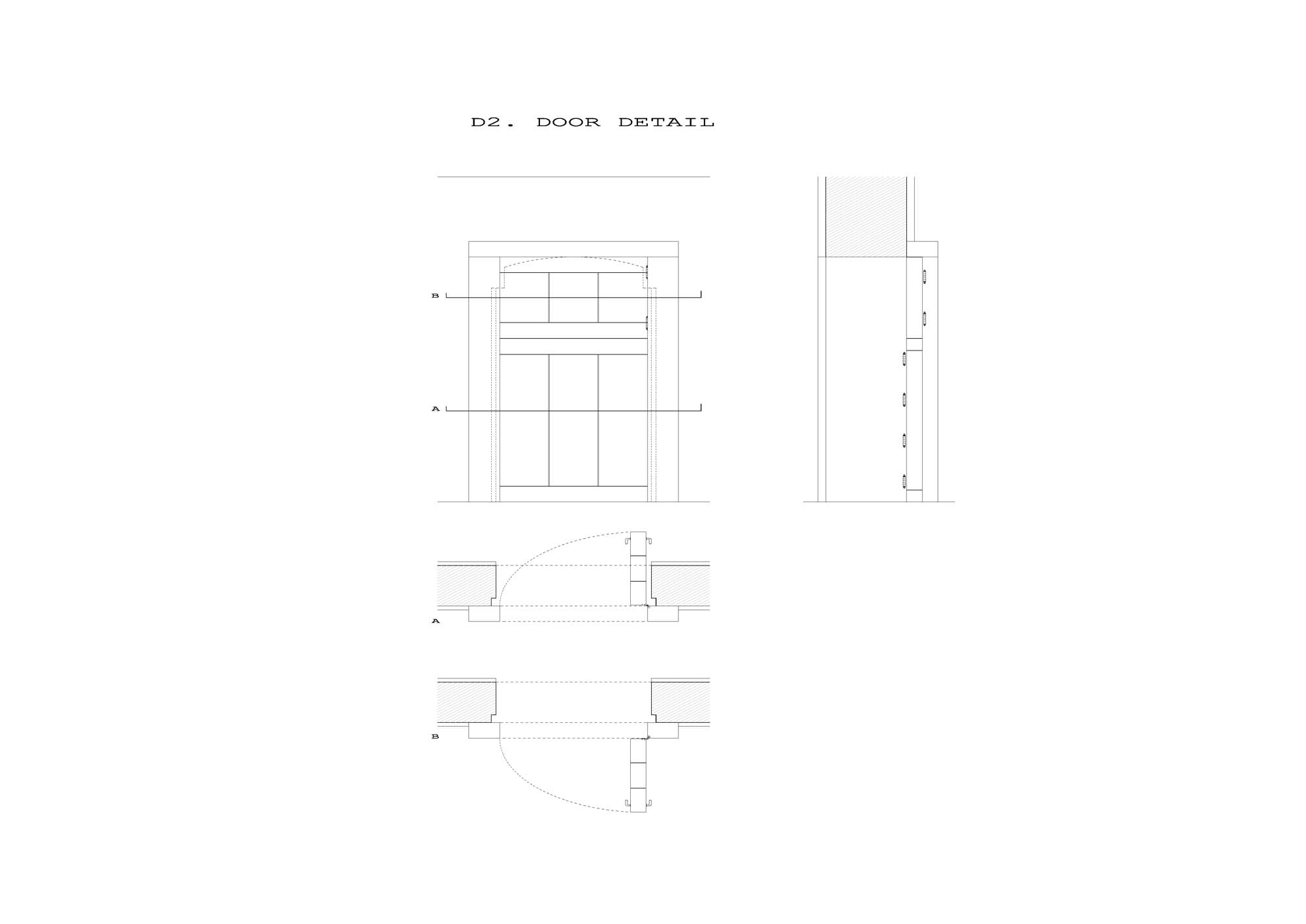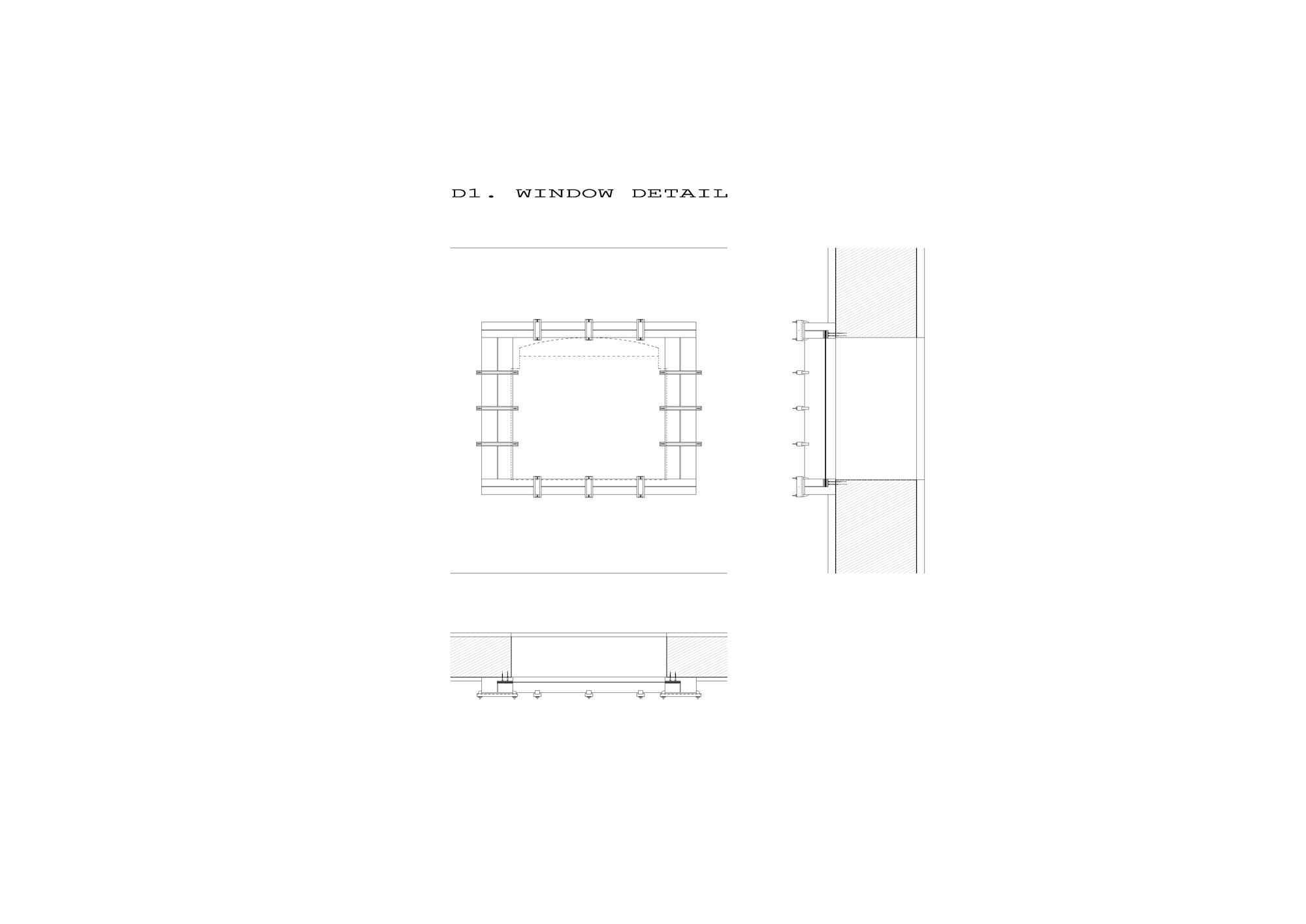In a small warehouse of the old slaughterhouse of Madrid, warehouse 8B, the tiles in bad condition have been removed from the roof, been stacked and been put inside to solve a problem. This could be the summary of the intervention.
The priority of the intervention was to replace a roof of flat shingle tiles over boards and successively patched thin, hollow bricks, to carry out a structural reinforcement of the whole set, and to fit out the indoors, thermally and acoustically, so as to provide service to the new uses. This process had been followed before in some other warehouses of the slaughterhouse and, as a result, mountains of tile, timber, cladding and granite slab rubble piled up waiting to be taken to the dump.
I prefer to think that this project emerged from opportunity, from discovering an opportunity in that rubble.
In the path of exploring all the reasonable possibilities, the construction system turns into a project generator, in the place where a certain ethic view on rehabilitation rests, before architecture.
The absence of some bonding elements produce lattices, the passing of light. Sometimes a whole piece for the walls, others, half a piece for the claddings. The problem of the corners, the lintels. The universal problems that architecture faces arise. At the same time and with the same intensity the workforce and imperfection appear. The imperfection of man and the old, the recovered. I recall a naïve order given on the building site: “Twist yourself José, it doesn’t matter” and an answer, a lecture from the site manager: “I won’t twist! There will always be time for that!” A job of many, full of vibrations. The vibrations of the collective craftsmen, the craftsman that Richard Sennett claims.
Like that cottage in the woods by the Swedish architect Ralph Erskine, where he piled trunks to protect himself from the harshness of winter, this project is also bioclimatic. It is bioclimatic because the tile contributes to the thermal and acoustic comfort and it’s sustainable because it reinvents itself with what it has within range. It is bioclimatic like architecture of a small country village, like those hearth-chimneys lined with clay that can be found in the province of Soria.
